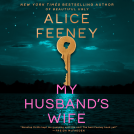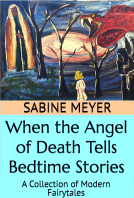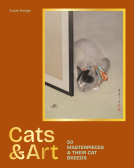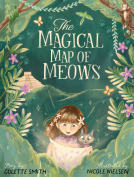
Victorian Murderesses
A True History of Thirteen Respectable French and English Women Accused of Unspeakable Crimes
by Mary S. Hartman
This title was previously available on NetGalley and is now archived.
Send NetGalley books directly to your Kindle or Kindle app
1
To read on a Kindle or Kindle app, please add kindle@netgalley.com as an approved email address to receive files in your Amazon account. Click here for step-by-step instructions.
2
Also find your Kindle email address within your Amazon account, and enter it here.
Pub Date Jun 18 2014 | Archive Date Oct 02 2014
Description
This riveting combination of true crime and social history examines a dozen cases from the 1800s involving thirteen French and English women charged with murder. Each incident was a cause célèbre, and this mixture of scandal and scholarship offers illuminating details of backgrounds, deeds, and trials.
"The real delight is that historian Mary S. Hartman does more than reconstruct twelve famous trials. She has written a piece on the social history of nineteenth-century women from an illuminating perspective: their favorite murders." — Time Magazine
"Noteworthy …. It has several distinctions: its expert prose style, its scholarly authority, and its perceptive analysis of the prevailing attitudes toward women's roles and domestic relations."—Criticism
"The author would have made a fine detective …. When she observes the women and men in extreme circumstances, she writes with the gift of a novelist and the depth of a scholar." — Los Angeles Times
"Vividly written, meticulously researched." — Choice
Available Editions
| EDITION | Paperback |
| ISBN | 9780486780474 |
| PRICE | $14.95 (USD) |
Average rating from 40 members
Featured Reviews
 Rosemary S, Librarian
Rosemary S, Librarian
Victorian Murderesses by Mary S. Hartman. Published by Dover
June 27, 2014 by cayocosta72 Leave a comment
Originally published in 1977, this is a scholarly look at 13 French and English women accused of murder in the 19th century. At a time when women were considered helpless, delicate flowers, these crimes were particularly shocking and the press and public were hungry for the stories. Here are the accounts of the murders, the victims, their killers and the ensuing trials. A fascinating look back at crime before 24 hour news and the internet.
 Laura B, Librarian
Laura B, Librarian
2.5 stars. This book should have been really interesting, but I had a lot of trouble getting into it. I didn't find the author's writing style to be very compelling, which I think was a large part of the problem for me. Also, I thought that including 2 women in each chapter and going back and forth between them got confusing at times - I would have preferred a single chapter for each subject.
 OutlawPoet ., Reviewer
OutlawPoet ., Reviewer
Scholarly, But Fascinating
When I chose to read this book, I thought I was getting something lightweight - a scandalous, fluffy, and sensationalist book about murderesses. I had my popcorn ready.
But as I started to read, I realized that this is a serious and scholarly study of a woman's place in Victorian society, how it lead to various murders, and how society's view of women impacted the outcome of various murder investigations. And I still munched my popcorn.
This is an intelligently written and fascinating historical perspective that completely opened my eyes to life as a Victorian woman. The book really isn't about the murders per se, so if you are expecting gruesome details and salacious photos, move on. Instead, you get an in depth and very personal look into the lives of thirteen woman, as well as a perspective, based on their experiences, of life in general at that time.
Yes, there is sex (in some cases a lot of it), poison, and intrigue, but it's bracketed by a serious look at how woman were treated then - and now.
I would have wished for more photos of the woman in question (if they exist) and, yes I admit it, a little more gruesome detail, but this was a fascinating read!
 Heidi G, Reviewer
Heidi G, Reviewer
Loved this book and so glad to see it's been returned to print! You can't beat the highly readable scholarly treatment of these 13 Victorian murderesses. Harman does a spectacular job of bringing these women and the carnage they created into the 20 and 21st centuries as well as giving the reader an excellent feminist critique of their reception in scholarly and popular culture. Pour yourself a cup of tea and enjoy the variety of their crimes and their drive to define themselves outside the constrictions of Victorian life.
 Sara P, Reviewer
Sara P, Reviewer
Sebbene non sia un'appassionata di true crime, la possibilità di esplorare la vita delle donne della borghesia vittoriana e la società in cui si muovevano era troppo allettante per rinunciarci; e in un certo senso questa esplorazione è tanto più interessante quanto condotto attraverso figure che infrangono l'immagine comune al tempo (e nella nostra epoca) dell'angelo del focolare, mostrando il volto sconosciuto (ma immaginabile - davvero pensavamo che passioni, desideri, dolori e aspirazioni fossero estranee a intere generazioni di donne, solo perché per convenzione si vedevano chiuse nel segreto dei loro salotti?) e innominabile della femminilità ottocentesca.
I watch the ID channel and a lot of murder shows, real and fake. I like to read about the backstory of the murders. This book just was to much. It kept going back and forth. I did like the historical pieces, but I guess since I had read bout many of these women before I was expecting something else.
 Victoria I, Media/Journalist
Victoria I, Media/Journalist
Victorian Murderesses by Mary Hartman delves into the lives, crimes and trials of 13 women in England and France during the Victorian Era. The books separates the crimes into 6 sections, with two murderesses per section, save for one that involves a mother-daughter crime. From women who murdered their children, to women who murdered oppressive lovers and husbands, the book is filled with written accounts and the occasional piece of village gossip.
Victorian Murderesses explores not only the crimes of 13 women, but also the roles and reasoning behind their behaviors. This at times led the book to read more like the textbook out of a University Women Studies course rather than a true crime discussion. The book uses highly detailed documentation from the murderesses trials, private lives and journals to make a case for the accused, with the book often falling into a sympathetic role. Though laden with justification, the book still makes it very clear that these women killed other, sometimes even children in their care.
For those who enjoy murder dramas and Investigation Discovery documentaries, this book will be a letdown. It is far more interested in the reason behind the murder rather than the act of the murder itself. Victorian Murderesses is more concerned with the historical details, trial documents and verbal testimony of those involved in the murder case. For those readers who delight in the details, love well researched history books and trial documents, this book will be 400 pages of murderous delight.
 Chelsea W, Educator
Chelsea W, Educator
This book was incredibly interesting! Every case was presented in a way that both made it a learning experience and made it feel like watching a murder show on television. This book is a great way to learn about both the the Victorian era and some true crime.
In "Victorian Murderesses" you are presented with 13 crime cases set in the Victorian era. The book is divided into several chapters dealing different aspects of crimes. In most cases there is an English and French woman and the author pays attention on showing the differences in both countries.
I read quite a lot of crime literature and thus are interested in real crimes and how the public dealt with them. Until now, I haven't read much non fiction books about the era which made it even more interesting for me to learn more about a women's life back then. I really liked the fact that the author paid attention to both English and French women. The different topics in the book were well presented although I found some more interesting than others. But this is not necessarily a bad thing as this is just my personal opinion.
The book was quite informative and I enjoyed reading it but there were some passages that were maybe a little too scholarly. The chapters are rather long and sometimes it was quite difficult to focus on the important facts.
Nevertheless, I liked the author's way of presenting the accused's life, their motives and the impact of their social standing. It's not really a light read but if you can handle that much information you'll have a great time reading the book.
 Kimberly F, Media/Journalist
Kimberly F, Media/Journalist
I was expected a light, fluffy beach read, but this reads like a text. Lots of information and historical references.
 June D, Bookseller
June D, Bookseller
Slightly more hardgoing than I expected but still a fascinating book and one that is fitting in with my current obsession with Victorian and Victorian set fiction .
 Marjolein E, Reviewer
Marjolein E, Reviewer
I received a free copy of this book from the publisher via Netgalley in exchange for an honest review, thank you!
Normally I never really read a lot of true crime books as I find them mostly speculative or just looking for the scandals in the stories. I'd read some reviews about this book before requesting it and they told me that this book was a lot more than just a mere retelling of the presumed crimes of this women...
I'm quite interested in the Victorian era and this book really helps to understand the society in which these crimes took place and the shifting roles for women in this society. I was actually surprised to learn that women were sent to prison for shorter times and had far greater chances of being acquitted.
If you're looking for scandal, this book probably isn't for you. But if you want a well-researched account on the lives of thirteen women in Victorian England and France as well as the story of their crimes, I can recommend this book. I liked it more than I anticipated.
 Lori T, Librarian
Lori T, Librarian
This is a well-researched book detailing the murders committed by several English and French women during the Victorian era. The author takes a look at some aspects of the crimes in relation to the era in which they were committed. While the dastardly deeds may be milder than those we often hear about in 21st century news, the crimes were "unspeakable", as the subtitle suggests during the time in which they were committed. It bogs down a bit in places, but it is still a fascinating look at the subject. I would have preferred footnotes to end notes, particularly since the author often elaborates a bit more in those. This review refers to Dover's 2014 edition which I received from the publisher through NetGalley for review purposes.
 Cleo P, Reviewer
Cleo P, Reviewer
There is something quite fascinating about women who murder, and judging by the amount of contemporary reporting of the details about the cases featured in this book, nothing much has changed over time. In this book the author has selected an Englishwoman and a Frenchwoman for each chapter based upon the circumstances, rather than the method of their crimes. All the women featured are from the middle-classes and a certain amount of conjecture is used to paint a picture of this class of women from the details of their cases the reasoning of the author being that these women’s lives weren’t documented or studied in the way of the lower classes and so using these cause celebres can give us a glimpse behind the drawing room curtains of their lives. I’m not completely convinced by this argument but for some of the broader details it works, for instance the chapters that touch upon contraceptive gives us an idea of how widespread or acceptable this was in Victorian England for the middle-classes.
The beauty of this book is threefold; the details of the crimes committed the resulting investigation and if appropriate trial, the popular opinion at the time of the guilt or innocence of those accused using contemporary media and lastly the particular social issues that may have led these women to act outside the law and kill another person. Each case presented was interesting and appeared to be well-researched, although one of the downsides of reading this kind of book on the kindle is that following the notes as you go along is very time-consuming so I tended to wait until I’d finished a chapter to catch-up on these. The fact that there were two women per chapter means that the reader does need to concentrate once the initial setting of the scene has happened, as the author switches between the two subjects to compare and contrast the difference between the two societies in a number of different spheres, including popular opinion and expectations.
The author states in the preface:
These accused daughters, wives and mothers have little to teach any would-be twentieth-century practitioner about the art of murder; nearly all of them bungled badly in the ac, and those who got away with it relied upon methods that required special circumstances and relations between the sexes which no longer obtain.
And that is precisely what makes this study so interesting, women can no longer act coy in the witness box, but they could, and were expected to, in Victorian England and so many of the more salacious details are hinted at rather than baldly stated both at the trial and the resultant reporting.
The cases cover the years 1840-1890’s and the subjects covered are:
Marie Lafarge and Euphemie Lacoste which covers the use of arsenic in matriomony Madeline Smith and Angelina Lemoine who were both between school and marriage when they were accused of killing their lovers Celestine Doudet and Constance Kent who were both spinsters when they murdered Florence Bravo and Henriette Francey the so called new women who were defying the old order of society Gabrielle Fenayrou and Adelaide Bartlett both wives of shopkeepers who were reported to have committed adultery Florence Maybrick and Claire Reymond who were allegedly victims of the double standards held at the time.
I found this book both interesting and informative although the language at time is quite dry, this is a study rather than a book for entertainment but one that I will be seeking a physical copy of on my bookshelf to supplement my Victorian crime selection.
This book was originally published back in 1976 but has been re-released in 2014 for a new generation of readers by Dover Publications who were kind enough to give me a copy of this book in return for my honest review.
My recommended further reading:
The Suspicion of Mr Whicher by Kate Summerscale – Constance Kent is the chief suspect in the The Murder at Road Hill House and features in chapter three of this book.
Death at the Priory by James Ruddick – The murder of Charles Bravo is the subject of this non-fiction book which explores all the possible culprits to this horrific murder by poison. (chapter four in this book)
A Very British Murder by Lucy Worsley – an excellent look at the fascination that we have with a ‘good murder’ and the reporting that fed this desire.
 Heather B, Librarian
Heather B, Librarian
Victorian Murderesses is a well researched book and very fascinating. The book is a little dry, but I enjoyed the book.
 Paula D, Reviewer
Paula D, Reviewer
This book is both historical and sociological. It is a very well-written and researched book on famous Victorian era murders committed by women. This is the historical part.
To the author's credit, the stories of these women are interesting and compelling. Despite the considerable research and supporting documentation in the book, there is nothing dry and boring about it.
The reader gains a much better understanding of the role of women, particular upper-class and middle-class, during the Victorian era. This is where the sociological aspect of the book comes into play. One can understand and empathize with the plight of women during Victorian times through reading these stories.
I learned a lot by reading this book - very well done, Ms. Hartman
 Andrea F, Librarian
Andrea F, Librarian
The subject matter is quite interesting, but it's addressed in a much more scholarly, academic way than I was expecting. Each chapter contrasts two similar murderesses, switching back and forth between their stories, which makes it hard to keep the individual stories straight. The introduction and conclusion completely summarize the cases studied, much the way a collegiate thesis or dissertation would, and refer to the text as "this study". All in all, it's an intriguing book, but definitely not a quick or easy read.
If you are looking for a great read about women who have committed murder in the Victorian era, this is THE book. I really enjoyed the way the chapters were broken up into two murders that were similar. There is in depth study of each case, the history, and the cases. If you are looking for a great read about women who have committed murder in the Victorian era, this is THE book. I really enjoyed the way the chapters were broken up into two murders that were similar. There is in depth study of each case, the history, and the cases. If you are looking for a story, this will not be the book. If you are looking for a historical study, this IS the book to read. I am giving four instead of five stars ONLY because there may have been a little too much information. I couldn't get some of the facts to relate to why the crimes occurred for a couple of the women.
I do recommend this book for anyone interested in a study of murders committed by women. I was given the opportunity to ready this Victorian Murderesses by Mary S. Hartman by NetGalley.
Readers who liked this book also liked:
JUNO
Arts & Photography, Comics, Graphic Novels, Manga, Travel
Sabine Meyer
General Fiction (Adult), Sci Fi & Fantasy, Teens & YA



















